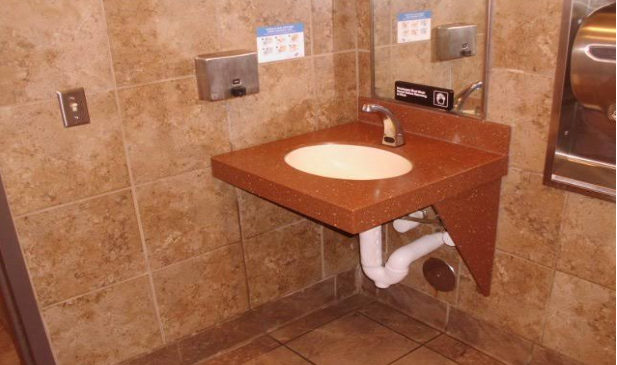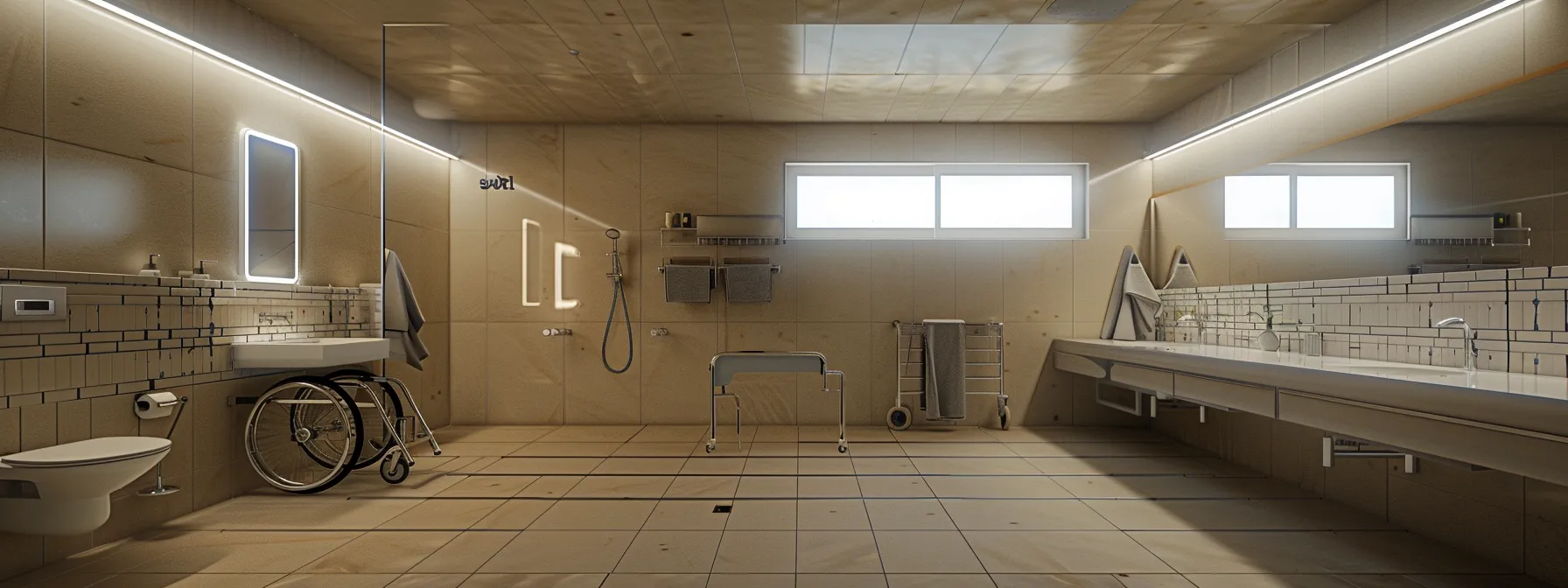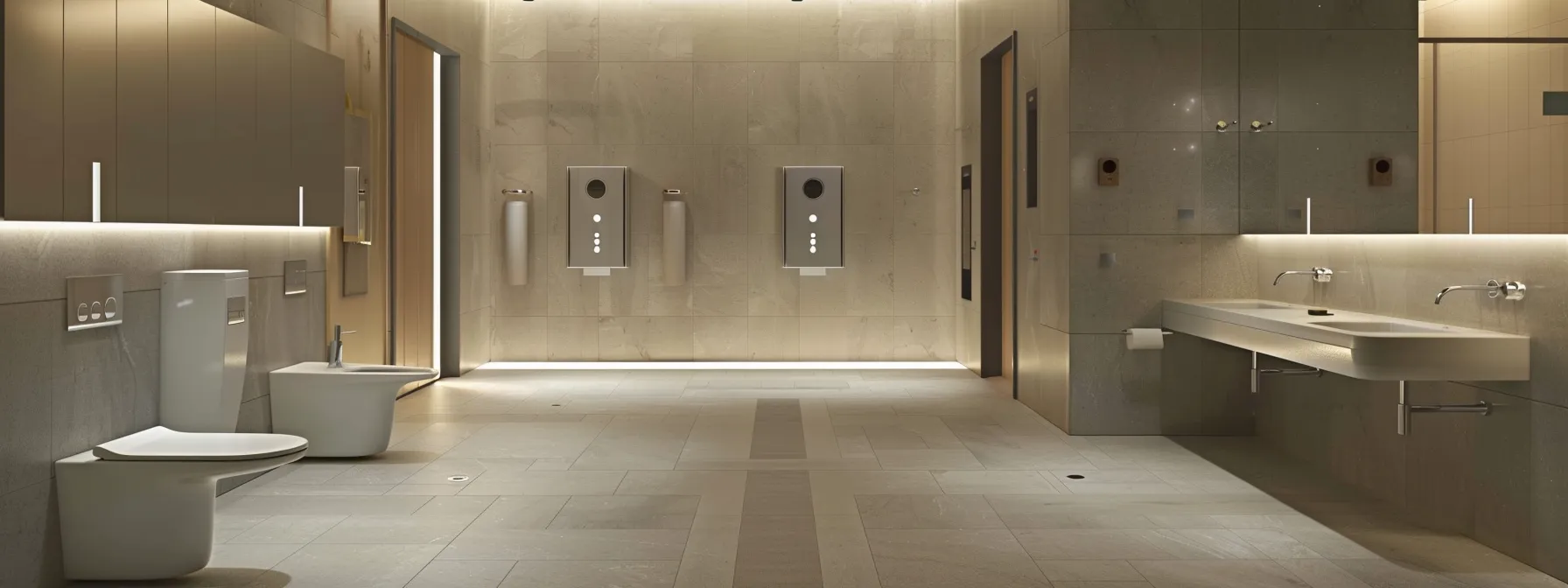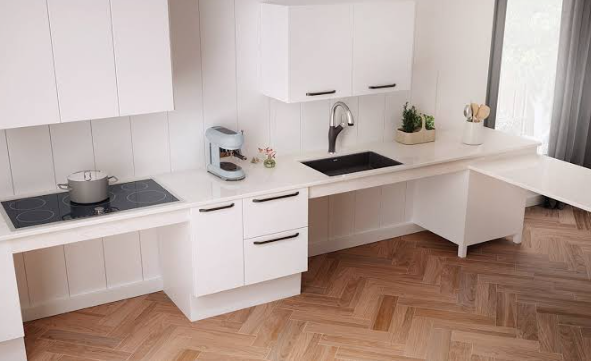
Creating bathrooms that are both functional and accessible requires an understanding of ADA knee clearance regulations. Proper dimensions ensure that individuals using mobility aids can comfortably access plumbing fixtures without obstruction. Attention to length and height in design plays a pivotal role in enhancing usability for all. This comprehensive exploration of ADA bathroom knee clearance regulations will provide vital insights and practical applications. Keep reading to discover essential measurements, design considerations, and future trends that will shape compliant bathroom spaces.

Understanding the significance of ada knee clearance within ADA regulations is foundational for creating accessible bathroom environments. Proper knee clearance not only meets minimum requirements necessary for compliance but also facilitates ease of use for individuals with disabilities. The standards for measuring this clearance vary based on specific factors, including the layout of the toilet compartment, the presence of a pier, and adjacent cabinetry. Additionally, accommodating the diverse needs of users ensures that essential elements, such as access to a paper towel dispenser, are considered within each unique jurisdiction. This awareness and attention to detail play a critical role in fostering inclusive spaces for all individuals.
Knee clearance serves as a crucial component in the design of ADA-compliant bathrooms, ensuring users can comfortably maneuver around essential fixtures. Proper clearance allows individuals to position themselves perpendicular to the toilet while wearing bulky clothing, such as a coat, thus enhancing their ability to access toilet paper and maintain dignity during use. Furthermore, incorporating this thoughtful design element aligns with the international symbol of access, promoting an inclusive environment within alcoves and other spaces.
The ADA regulations establish specific minimum requirements for knee clearance around an accessible toilet to ensure usability for individuals with disabilities. Typically, the recommended dimensions include a minimum of 27 inches from the floor to the underside of the sink or counter, allowing adequate space for wheelchairs and other assistive devices. Architects must also consider the configuration of the toilet bowl and its proximity to adjacent fixtures to maintain compliance with ADA accessibility guidelines:
| Specification | Measurement |
|---|---|
| Knee Clearance Height | 27 inches minimum |
| Knee Clearance Depth | 8 inches minimum |
| Toilet Bowl Centerline from Wall | 16-18 inches |
| Transfer Space | 36 inches minimum on one side |
This understanding of minimum requirements is essential for answering common FAQ about ADA bathroom designs, ensuring spaces are appropriately structured to allow for safe and dignified use.
Measurement standards play an essential role in ensuring that accessible bathroom designs effectively accommodate users with diverse needs. A proper aisle width and knee clearance allow individuals to maneuver safely, making it easier for them to position their hand and toe within the vicinity of the toilet compartments. These specifications not only facilitate functionality but also enhance the overall usability of a property designed for inclusivity.
Users with disabilities often require specific adaptations to ensure their needs are met in an accessible environment. Ensuring adequate knee clearance is vital, allowing smooth movement within confined spaces such as bathrooms adjacent to bedrooms. Additional features, such as towel dispensers placed at appropriate heights, enhance usability while preserving the aesthetic integrity important in historic preservation settings.
Understanding knee clearance is just the beginning. Now, let’s dive into the specific measurements that ensure ADA bathroom compliance.

Understanding specific measurements for ADA bathroom compliance is vital for creating effective accessibility solutions. The required knee clearance space defines the dimensions necessary for maneuverability, ensuring users can navigate comfortably around fixtures. Optimal heights and depths are determined to accommodate various needs, facilitating easy access to soap dispensers and hand dryers. Adjustments for sinks and vanities must be made to support users in maintaining independence, while proper space allowances around toilets and urinals ensure safe transfers. Incorporating universally recognized pictograms will enhance usability and understanding, helping to foster inclusive environments that prioritize accessibility for all individuals.
Defining the required knee clearance space is imperative for ensuring users can navigate comfortably around bathroom fixtures, such as the toilet seat and shower. Adhering to specific measurements allows for a fraction of flexibility for individuals with mobility challenges, making access smoother and more efficient. Proper clearance ensures that users can position themselves adequately without obstruction, greatly enhancing their overall experience within the facility.
Optimal heights and depths are critical for ensuring accessible environments, especially in areas like bathrooms. In settings such as prisons, where individuals may need to maneuver within a confined cell, proper design standards can enhance usability. For example, the installation of bathroom fixtures at recommended heights allows seamless access, reducing the physical strain on those utilizing assistive devices while facilitating efficient interaction with other amenities, including computer hardware for those needing additional support.
Adjustments for sinks and vanities in ADA-compliant bathrooms require careful attention to ensure accessibility for all users, including those in unisex facilities. The height of the sink should allow for comfortable use by patients and individuals using assistive devices, while the positioning of pipes needs consideration to prevent obstruction. Additionally, the space around the sink must enable easy access, allowing users to move effortlessly, especially in environments where features like fire doors may limit maneuverability.
Space allowances around toilets and urinals are critical for ensuring ADA compliance, particularly to facilitate easy maneuverability for wheelchair users. Adequate spacing allows individuals to transfer effectively and access necessary fixtures without obstruction. Proper construction techniques, including the strategic placement of fasteners, can enhance usability within these restroom environments, ensuring that all users feel comfortable and supported.
Ensuring compliance goes beyond measurements; it requires a thoughtful design approach. Next, explore the essential considerations that will make your ADA bathroom not only compliant but also user-friendly.

Incorporating knee clearance into bathroom layouts necessitates careful planning and precision. Designers must understand the implications of various dimensions as dictated by building codes, ensuring compliance while prioritizing user comfort. Selecting ADA-compliant fixtures and fittings, such as appropriately placed drinking fountains and accessible countertops, is vital for enhancing overall functionality. Clear floor space must also be maintained to facilitate ease of movement, allowing users to navigate without hindrance. Additionally, avoiding common design pitfalls, such as over-cluttered layouts or misaligned components, can greatly improve accessibility. Adhering to these practices fosters environments where individuals using assistive devices can exert the necessary force to maneuver safely and effectively.
Incorporating knee clearance into bathroom layouts is vital for creating spaces that meet ADA regulations while accommodating individuals with disabilities. Designers must account for various factors, including the configuration and size of the room, to ensure that all users, regardless of gender, can navigate the facilities comfortably. Compliance with the law, along with considerations from organizations like the National Fire Protection Association, enhances overall safety and accessibility in these essential environments.
Selecting ADA-compliant fixtures and fittings is essential for creating inclusive bathroom environments that adhere to the Americans with Disabilities Act of 1990. Key elements such as accessible countertops, signage that provides clear instructions, and provisions for portable toilets need to align with the guidelines set forth by the United States Access Board. Implementing these features enhances user experience and ensures that all individuals can navigate facilities with ease.
Clear floor space is crucial in ADA-compliant bathroom designs as it allows users, especially those with mobility limitations or visual impairments, to navigate the area safely. Adequate spacing ensures that essential fixtures, such as the soap dispenser and shelf, are easily accessible without obstructing pathways, particularly in emergencies when quick access to the fire alarm system may be required. Maintaining unobstructed floor areas encourages independence and fosters a sense of comfort for all individuals utilizing the restroom facilities.
Avoiding common design pitfalls in ADA restroom environments is essential to prevent discrimination and ensure compliance with regulations. Misplacing fixtures, such as towel dispensers or faucets, can create barriers, while inadequate spacing poses challenges for individuals using assistive devices. Placing braille signage near entrances and ensuring that all elements are within appropriate reach, including drinking fountains and other amenities, promotes seamless access.
Transitioning from design considerations to practical applications, bathroom renovations present unique challenges in achieving ADA compliance. The need for functional spaces that meet regulatory standards ensures both safety and accessibility for all users.

Recognizing the necessity for knee clearance adjustments plays a pivotal role in ensuring that bathrooms within any dwelling meet ADA compliance requirements. Upgrading existing facilities often entails careful assessment of factors such as the positioning of grab bars and the overall wall structure, which can impact usability for individuals with disabilities. Designers and contractors must follow systematic steps for enhancing accessibility, paying special attention to the height of various fixtures and features, including sinks and countertops, to provide a seamless experience. Furthermore, thorough documentation is essential for compliance verification, as it ensures that all modifications align with regulatory standards, thus promoting an environment that is both functional and inclusive.
Identifying when knee clearance adjustments are necessary begins with an evaluation of the existing bathroom layout, including fixtures and their proximity to walls and closets. By consulting guidelines from organizations such as the American National Standards Institute, designers can ensure compliance with accessibility standards, allowing for adequate space for maneuvering around essential features like a toilet or sink. Documenting these assessments thoroughly assists in prioritizing renovations, particularly in areas that may include an elevator transfer to the bathroom.
Upgrading existing bathrooms to comply with ADA regulations involves a series of well-defined steps that prioritize user accessibility and comfort. Contractors should begin by consulting the international building code to assess the necessary height adjustments for fixtures such as sinks and urinals, ensuring they meet compliance standards. Furthermore, engaging with the advisory council on historic preservation can offer guidance on balancing modern accessibility improvements with the aesthetic and historical integrity of older facilities, particularly in health care settings where accommodating diverse patient needs is vital.
Documenting compliance with ADA regulations is fundamental to ensuring that bathroom renovations effectively meet the necessary standards. Proper documentation involves meticulously detailing each modification, as this creates a verifiable record that can withstand any scrutiny under pressure. This process not only fortifies the legitimacy of the renovations but also fosters trust in the commitment to accessibility for all users.
As the complexities of ADA regulations become clearer, real-life implementations offer invaluable lessons. Let’s examine some inspiring case studies that showcase ADA-compliant bathrooms in action.

Evaluating real-world applications of ADA bathroom regulations provides valuable insights into effective knee clearance strategies. Examining compliant public bathrooms reveals best practices that promote accessibility, highlighting key measurements that ensure users can navigate comfortably. Conversely, analyzing non-compliant designs underscores critical lessons, illustrating the consequences of neglecting proper clearance and the impact on user experience. Additionally, innovative solutions tailored for challenging spaces showcase how creativity in design can meet compliance while enhancing overall functionality, contributing to an inclusive environment for all individuals. By exploring these examples, professionals can better understand the importance of adhering to ADA standards in every bathroom renovation or construction project.
In various public bathroom implementations, compliant knee clearance serves as a hallmark of thoughtful design, reflecting a commitment to accessibility. For instance, many municipal buildings have incorporated knee clearance of at least 27 inches beneath sinks, ensuring that users with mobility aids can access fixtures comfortably. These adaptations not only fulfill regulatory requirements but also enhance user experience by promoting independence and ease of movement.
| Location | Knee Clearance Height | Knee Clearance Depth | Additional Features |
|---|---|---|---|
| City Hall Restroom | 27 inches | 8 inches | Automatic faucets and soap dispensers |
| Public Library | 27 inches | 8 inches | Accessible towel dispenser at 48 inches |
| Community Center | 27 inches | 8 inches | Clear signage with braille |
Examining non-compliant bathroom designs reveals significant insights into the consequences of overlooking proper knee clearance. Instances of inadequate space can lead to user frustration and hinder mobility, ultimately compromising the dignity and safety of individuals with disabilities. Lessons from these cases emphasize the necessity of adhering to established regulations, as failure to do so not only limits accessibility but also reflects poorly on the facility’s commitment to inclusivity.
Designers are increasingly adopting creative strategies to address the challenges posed by limited bathroom space while ensuring ADA compliance. Utilizing modular fixtures that can be adjusted or reconfigured allows for flexibility in tight environments, accommodating various user needs without sacrificing accessibility. Furthermore, implementing innovative storage solutions, such as wall-mounted shelves or foldable elements, can optimize floor space while maintaining essential knee clearance and enhancing usability.
As designers look ahead, innovative ideas for ADA-compliant bathrooms continue to emerge. The exploration of future trends highlights the critical role of knee clearance in enhancing user experience and accessibility.

Anticipating the future of ADA bathroom design necessitates a thorough understanding of potential changes in regulations and advancements in accessibility technologies. As societal needs evolve, so too must the standards that govern accessible spaces, paving the way for innovations that enhance usability across diverse environments. Emerging technologies, such as automated fixtures and smart devices, are set to transform how users interact with bathroom facilities, promoting greater independence. Additionally, the principles of universal design are gaining traction, advocating for layouts that cater to a broader range of abilities and preferences. This shift is anticipated to create bathrooms that not only meet regulatory requirements but also provide a welcoming experience for all individuals, regardless of their specific needs.
As society becomes more aware of diverse accessibility needs, anticipated changes in ADA regulations may reflect a shift towards more inclusive standards. Stakeholders, including advocacy groups and industry professionals, are likely to influence updates that promote enhanced safety and functionality for all users. Each proposed amendment will necessitate rigorous analysis to ensure compliance with evolving best practices in accessible design.
Emerging technologies play a pivotal role in enhancing bathroom accessibility by introducing intuitive features and adaptive designs. Automated faucets, hands-free soap dispensers, and smart toilets equipped with sensors not only streamline user interaction but also support individuals with varying levels of mobility. As these innovations become more prevalent, they foster inclusive environments that prioritize ease of use and user independence in compliance with ADA regulations.
Universal design principles are essential in shaping future bathroom layouts to accommodate a diverse range of user needs. By prioritizing accessibility from the outset, designers can create environments that not only comply with ADA regulations but also facilitate comfortable and independent use for all individuals. This approach emphasizes flexibility and adaptability, ensuring that bathrooms remain functional and accommodating as societal needs evolve:
| Design Principle | Description |
|---|---|
| Inclusivity | Designing spaces that are accessible to all users, regardless of ability. |
| Flexibility | Incorporating adjustable elements that can be reconfigured as needed. |
| Ease of Use | Ensuring that fixtures and features are intuitive and straightforward to navigate. |
| Safety | Implementing design elements that reduce the risk of accidents and enhance user confidence. |
This holistic view fosters a more welcoming atmosphere in public and private spaces, facilitating equal access for everyone.
Understanding ADA bathroom knee clearance regulations is vital for creating accessible and functional restroom environments. Proper clearance allows individuals with disabilities to navigate spaces comfortably and maintain independence. Compliance with these guidelines not only fulfills legal requirements but also fosters inclusivity for all users. By prioritizing knee clearance in design, facilities demonstrate a commitment to enhancing the overall user experience and dignity.

When considering the safety and accessibility of all users in a restroom, sink clearance plays a crucial role. The amount of space around a sink

Building an ADA-compliant kitchen doesn’t have to involve a full renovation. With a few adjustments, you can ensure ADA clearance in your kitchen and make